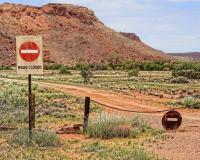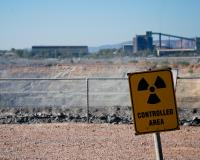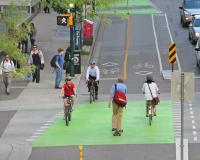
Vibrant Environment
Environmental Justice
All | Biodiversity | Climate Change and Sustainability | Environmental Justice | Governance and Rule of Law | Land Use and Natural Resources | Oceans and Coasts | Pollution Control

Numerous studies have shown that Black and Latinx communities in the United States face higher hospitalization and mortality rates from COVID-19 and are disproportionately harmed by the virus. While many cite comorbidities and underlying health issues as the reasons for this disparity, the root of this problem is systemic racism. Recent research has found that social determinants like access to healthcare, employment, and clean air and water are the true inequities that have made COVID-19 deadliest for communities of color.

We have the solutions we need to build an equitable and just climate resilient future. Over the past year, coalitions of frontline environmental groups, labor organizations, tribal groups, and other mission-driven organizations in the United States have developed and published comprehensive policy platforms to address the climate crisis. These platforms outline federal, local, and state policy for building resilience and transitioning to renewable and regenerative economies.

In recent years, scholars, journalists, and activists have drawn attention to the sexist, racist, classist, and homophobic attitudes that surround the U.S. environmental movement. Though the movement’s problematic aspects may come as a surprise to some, the exclusionary nature of mainstream contemporary environmentalism is no accident. The crusade to address the nation’s environmental issues was designed this way from the outset.

When I was a philosophy student at Princeton in the 1970s, our department was rated number one nationally because of its stars in analytic theory. But the hottest department was Harvard’s, where two professors who were office neighbors held opposing viewpoints on social philosophy and wrote bestsellers — an anomaly for such scholarly works.

Public meetings are a fundamental component of many policymaking and planning processes, including the natural resource damage assessment (NRDA) process that aims to restore the Gulf of Mexico ecosystem and the permitting and environmental review procedures for individual projects.

Indigenous communities in the Southwestern United States have been battling the impacts of uranium mining since the early 1940s. The geology of the Colorado Plateau was found to be rich in the radioactive mineral and drew mining to the area. The U.S. Department of Energy (DOE) sought uranium to develop nuclear weapons during the Cold War, which fueled the interest of mining companies that opened uranium mines and mills on and around indigenous land.

To address environmental inequity, we first need to understand where inequity exists geographically. Maps help model our reality and are a useful tool for locating and addressing environmental inequity. The power of maps in environmental justice was first revealed in 1987 in Toxic Wastes and Race in the United States, published by the Commission on Racial Justice.

Pandemics are global in nature, but their impacts are anything but uniform. COVID-19 is exposing substantial inequities, including disproportionate health and economic consequences for minorities. From medical care to broadband, different demographics have vastly different access to critical resources in a widespread crisis. Indian country is especially hard hit by coronavirus. It is the locus where matters of public health, Indigenous sovereignty, and environmental justice collide. Access to clean, safe, and affordable water offers a particularly stark example. Without water, even following the common sense admonition to frequently wash one’s hands becomes an insurmountable challenge.

If you have walked across downtown Manhattan recently, you may have been blinded by the new colorful green pavement marking protected bike lanes. NYC is one of many cities flaunting their new bike safety initiatives in political speeches, tourist brochures, and subway ads. Given the multiple economic, health, and environmental benefits of replacing car trips with bike trips, their pride is well-deserved. But in order for such initiatives to serve all New Yorkers, they must go a step further.
